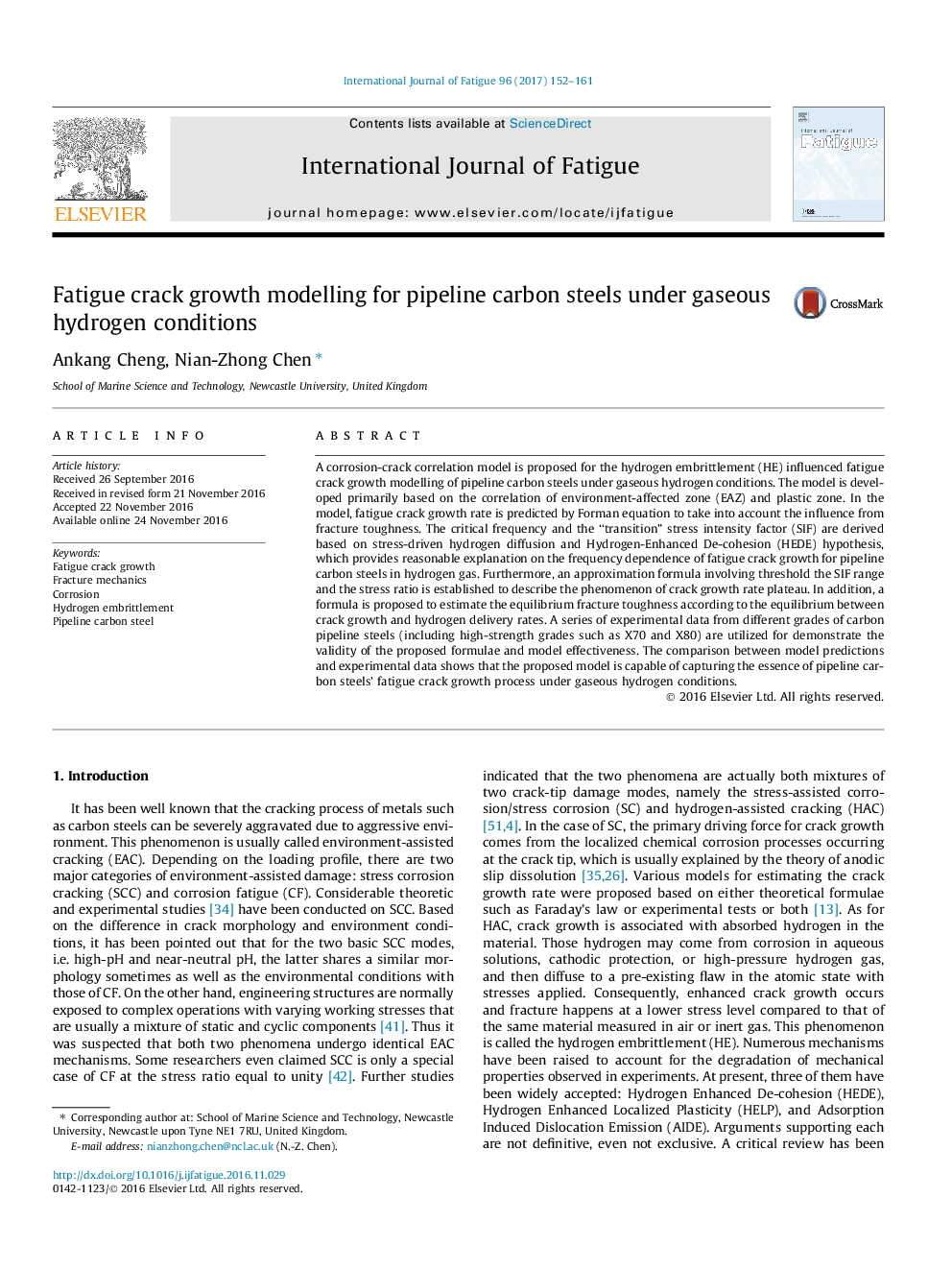| Article ID | Journal | Published Year | Pages | File Type |
|---|---|---|---|---|
| 5015165 | International Journal of Fatigue | 2017 | 10 Pages |
Abstract
A corrosion-crack correlation model is proposed for the hydrogen embrittlement (HE) influenced fatigue crack growth modelling of pipeline carbon steels under gaseous hydrogen conditions. The model is developed primarily based on the correlation of environment-affected zone (EAZ) and plastic zone. In the model, fatigue crack growth rate is predicted by Forman equation to take into account the influence from fracture toughness. The critical frequency and the “transition” stress intensity factor (SIF) are derived based on stress-driven hydrogen diffusion and Hydrogen-Enhanced De-cohesion (HEDE) hypothesis, which provides reasonable explanation on the frequency dependence of fatigue crack growth for pipeline carbon steels in hydrogen gas. Furthermore, an approximation formula involving threshold the SIF range and the stress ratio is established to describe the phenomenon of crack growth rate plateau. In addition, a formula is proposed to estimate the equilibrium fracture toughness according to the equilibrium between crack growth and hydrogen delivery rates. A series of experimental data from different grades of carbon pipeline steels (including high-strength grades such as X70 and X80) are utilized for demonstrate the validity of the proposed formulae and model effectiveness. The comparison between model predictions and experimental data shows that the proposed model is capable of capturing the essence of pipeline carbon steels' fatigue crack growth process under gaseous hydrogen conditions.
Related Topics
Physical Sciences and Engineering
Engineering
Mechanical Engineering
Authors
Ankang Cheng, Nian-Zhong Chen,
